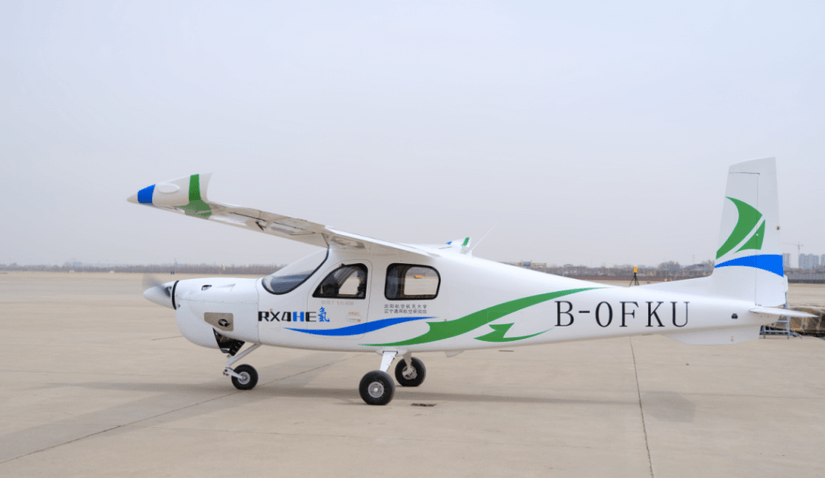On March 25, Liaoning Ruixiang Aircraft, a Chinese aircraft manufacturer, made the first demonstration flight of the RX4HE, a passenger-type aircraft equipped with a hydrogen engine that gives it a one-hour flight range at a speed of 180 km/h.
From Electric to Hydrogen
Liaoning Ruixiang General Aviation Manufacture Company Limited is a Chinese aircraft manufacturer that is characterized by its innovation capability. In 2012, the company had started the study and then the design of the first electrically powered, two-seat side-by-side monoplane with a high wing and carbon fiber fuselage. Named RX1E, the aircraft was produced at least twice. It was China's first composite and electric light sport aircraft, with independent intellectual property rights. But since then the aircraft manufacturer has continued its technological exploration and on March 25, 2023 flew the RX4HE, HE for Hydrogen Engine. The Chinese manufacturer's aircraft is derived from the RX4E, itself an electric aircraft with 4 seats, currently undergoing certification in China with the CAAC.
A 2-liter block
The engine, an internal combustion type, is a modified 2-liter block, jointly developed by Ruixiang and automaker FAW, with the support of several research centers and universities. The engine, with obvious automotive origins, is turbocharged and specially designed to use hydrogen as a fuel. It has the potential to be used in automobiles as well. FAW, formerly First Automobile Works, is a Chinese state-owned company specializing in automobile manufacturing. It produces cars, buses and trucks. It is China's third-largest automaker, with 3.080 million vehicles produced in 2014. Still, the 8.2-meter-long fixed-gear monoplane with a 13.5-meter wingspan can carry 4.5 kg of highly pressurized hydrogen. Thus equipped, it has a one-hour flight range at a cruising speed of 180 km/h. Ruixiang intends to use this demonstrator to advance the research and application of hydrogen aviation using hydrogen as a direct fuel source.
Découvrez cet article sur Air&Cosmos

